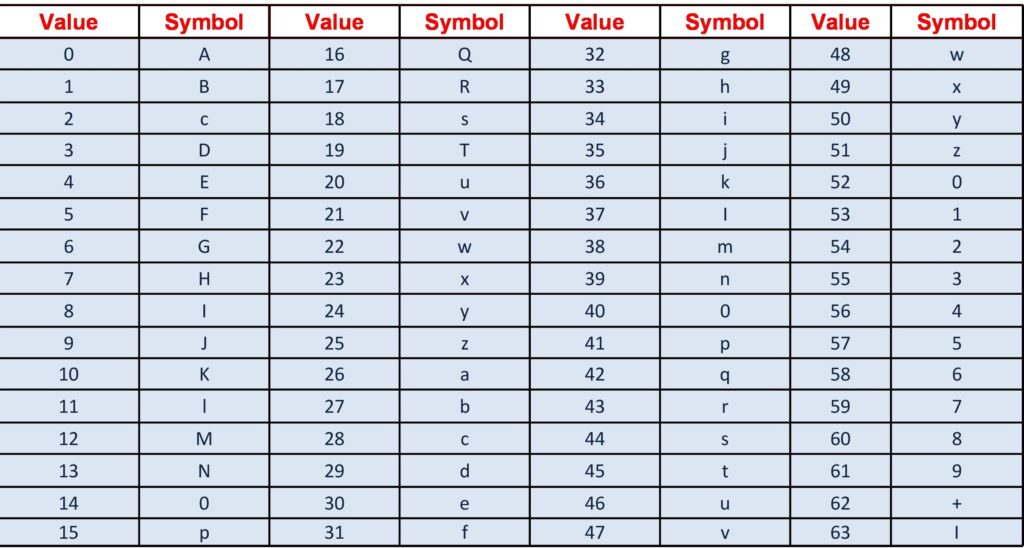

If the number of bytes are not in numbers of three, then padding is used = for 1 byte and = for 2 bytes.Ĭonsult wikipedia for more information. Those 6 bits form a number corresponding to the index in the character set supported by Base64 (A-Z, a-z, 0-9, + and /). The resulting buffer of 3 bytes is then broken in 4 packs of 6 bits each. How does Base64 encoding work?īytes forming the data are broken into buffers of 24 bits (3 bytes at a time). Concrete examples would be sending images in an XML file or in an email attachment. This is useful when binary data needs to be sent over media that are usually designed to handle textual data. Message Digester (MD5, SHA-256, SHA-512)īase64 is an encoding scheme used to represent binary data in an ASCII format.
BASE64 DECODE GENERATOR
BASE64 DECODE PDF
It showed various examples of encoding and decoding various file type, strings, pdf file, csv file etc. Thus, the article shows in detail about the Base64 encoding technique in PowerShell. $pdffile = Get-Content "C:\Vignesh\Vyapini Birth Certificate.pdf" Write-Host "Read the pdf" -ForegroundColor Green Write-Host "Demo of encoding a pdf file" -ForegroundColor Green Write-Host "after decoding, the url is " $dcu -ForegroundColor Green Write-Host "Decoding the above encoded url" -ForegroundColor Green Write-Host "after encoding,the url is" $res -ForegroundColor Green
BASE64 DECODE CODE
#The below code is used to encode the URL Write-Host "url before encoding " $testurl -ForegroundColor Green Write-Host "Demo of encoding and decoding urls using base64" Write-Host "encoded output is below" -ForegroundColor Green Write-Host "encoding a csv file using base64" -ForegroundColor Green Write-Host "Hex decimal values" -ForegroundColor Green Get-content $pa -encoding by -readcount $wd -totalcount $co | Write-Host "Demo of encoding to hex values" -ForegroundColor Green Write-Host "Error occurred" -ForegroundColor Red ::Default.GetString(::FromBase64String($str)) Write-Host "Decoding image file" -ForegroundColor Green ::ToBase64String((Get-Content -Path $fp -Encoding Byte)) Write-Host "Encoding the image file" -ForegroundColor Green $DecodedFile = Convert-stob -estr $b64str -fp C:\Vignesh\helloworld.exe Write-Output -InputObject (Get-Item -Path $fp) Write-Host "After decoding of exe" -ForegroundColor Green Write-Host "After encoding" -ForegroundColor Green Write-Host "Encoding of an exe file" -ForegroundColor Green Write-Host "Demo of Encoding and decoding of an exe file" -ForegroundColor Green Write-Host "Decoded text is as follows" -ForegroundColor Green $outfile123 = get-content c:\vignesh\decoded.txt ::ASCII.GetString(::FromBase64String($etext)) | Out-File -Encoding "ASCII" c:\vignesh\decoded.txt

Write-Host "Decoding the above converted text" Write-Host "ENCODED text file content is " $etext -ForegroundColor Green Write-Host "Welcome to the example of powershell base64 encoding and decoding" -ForegroundColor Green $output = ::Unicode.GetString(::FromBase64String($input)) $input = “vikivikivikivikivikivyapvyapvyapvyapvyapnandnandnandnandnandviki” Given below are the examples of PowerShell Base64: Example #1 ::Unicode.GetString(::FromBase64String(texttobedecoded')) Examples of PowerShell Base64


 0 kommentar(er)
0 kommentar(er)
